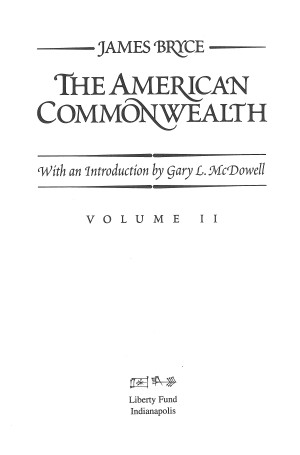
Part of: The American Commonwealth, 2 vols. The American Commonwealth, vol. 2
- Viscount James Bryce (author)
- Gary L. McDowell (introduction)
James Bryce examined “the institutions and the people of America as they are.” in The American Commonwealth, first published in London in three volumes in 1888. This edition’s expanded appendix includes Bryce’s 1887 essay, “The Predictions of Hamilton and De Tocqueville,” and contemporaneous (1889) reviews of The American Commonwealth by Woodrow Wilson and Lord Acton.